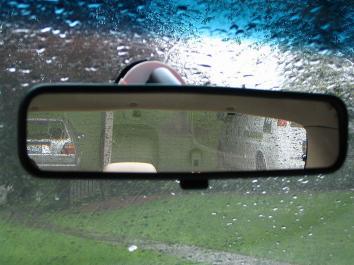Car manufacturers are positively giddy for safety-conscious cameras with cute monikers right now. There’s the Nissan Around View Monitor, the Honda LaneWatch and the Mercedes-Benz Night View Assist Plus, to name just a few.
The National Highway Traffic Safety Administration apparently shares some of the automakers’ enthusiasm. It recently issued a new rule that requires rearview back-up cameras in all passenger cars produced after mid-2018. This is aimed at countering the 210 fatalities and 15,000 injuries a year on average that result from back-over accidents.
But Elon Musk’s Tesla Motors and the auto industry group, the Alliance of Automobile Manufacturers, want to go a step farther in the name of not only safety, but fuel economy. They just issued a petition asking that the NHTSA update the Federal Motor Vehicle Safety’s Standards, which currently require all cars to have side and rearview mirrors, and allow them to replace side mirrors with cameras.
The idea of side cameras instead of mirrors as a feature of energy-efficient cars has been floating around the auto industry for a while. A number of years ago, the Partnership for a New Generation of Vehicles, a project between the Department of Energy and several major auto makers, had the goal of developing vehicles that would reach 80 miles per gallon. According to the Department of Energy, many of the concept cars eliminated side-view mirrors to improve aerodynamics. (Some also got rid of exterior door handles and had special air openings behind the rear wheels instead of a front-facing grill.)
In this case, the Auto Alliance says that side-view mirrors increase cars’ aerodynamic drag by 2-7 percent and that a 10 percent reduction in drag would result in about a 3 percent improvement in fuel economy.
But in the end, the NHTSA’s decision will likely come down to questions of improved safety. Dr. Paul A. Green, a research professor in the University of Michigan Transportation Research Institute’s Driver Interface Group who has studied the use of cameras in cars, told me that the NHTSA’s rear camera ruling was a no-brainer, given that back-up accidents can be so traumatic. (Parents running over their children is an all too common incident.) But he is more cautious about side-view cameras.
“Rear-view cameras are intended for short range, occasional use, and they provide a feature that is so much better than what’s on offer right now that even a low-tech camera is an improvement,” he said. “If you’re installing a side camera that’s being used constantly by the driver, its capabilities need to be greater. You’re replacing a simple, functional piece of glass with something that’s much more expensive.”
Still, Dr. Green agrees that side cameras could offer one significant safety advantage: image processing that is not possible with a mirror’s physical image. Auto makers could add a special night mode with an infrared-sensitive camera, a low light level sensor, or even thermal imaging capabilities that might assist in bad weather.
But will people drive better with side cameras? Tesla and the Auto Alliance’s petition suggests that cameras will help by expanding the driver’s field of view—a possibility especially helpful for older drivers with less mobility.
This advantage may depend on where the side camera image is displayed. In Dr. Green’s study, they connected the side cameras to a LCD display, attaching the display in two places: just inside the car’s front side windows or bracketed on the steering wheel. He said that driver awareness increased when the display was moved directly into the line of sight. But putting the images out to the sides of the driver, near where mirrors traditionally are placed, forced drivers to scan, heightening their knowledge of what’s on the road.
Side cameras images may also find it hard to compete with all the other features demanding attention on your display screen—a study has shown that Tesla drivers most often use their dash-browser (which works while you’re driving) to search news and finance.
If installed thoughtfully, there are clear safety benefits to side cameras, but there are also more mundane considerations: What happens when the camera simply gets old? In college, a friend duct-taped his side mirror to the car after a bored teen had knocked if off. This is the kind of cheap, quick fix that will become more difficult as cars become increasingly high-tech. The NHTSA anticipates that adding rear cameras alone will cost up to $45 on vehicles already equipped with a visual display and between $132 and $142 for all other vehicles, costing $546 million to $620 million annually.
As Wired pointed out, even if the Auto Alliance gains federal approval, car manufacturers wishing to replace side-view mirrors with cameras will still need to contend with state codes that often require at least two mirrors. Even if a ruling from the NHTSA does supersede state regulation, Elon Musk shouldn’t hold his breath—a ruling on side cameras may be years away. The NHTSA was meant to have put in place rear camera rules by 2011 after Congress passed legislation mandating the change in 2007, but delayed issuing the rules for years.
And sure, side cameras may have a lot of potential, but do we really need these fancy cameras when we’ll soon be shooting down the high way in our very own self-driving car?
